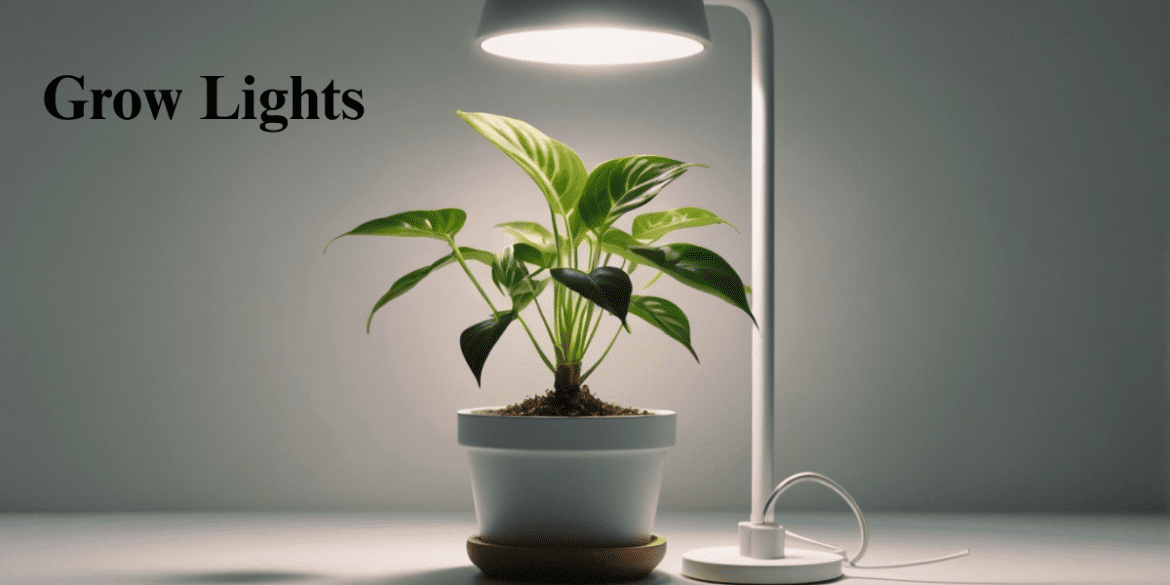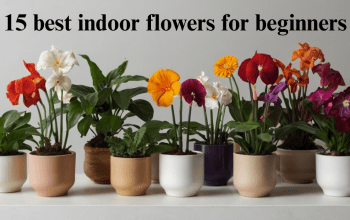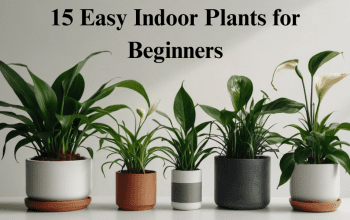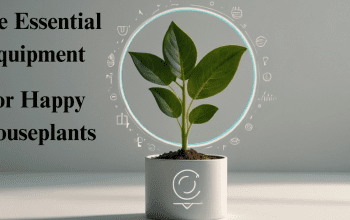If you’ve ever proudly brought home a lush, green plant from the nursery, only to watch it slowly fade into a sad, crispy version of itself, you’re not alone. Don’t worry—you’re not cursed, and your plant isn’t plotting revenge. The truth is, many plants struggle indoors because they’re simply not getting enough light. That’s where grow lights come in, like little suns you can plug into the wall.
Think of it this way: plants are basically solar-powered. No light = no energy = no thriving. Sure, you might shove your fiddle leaf fig near a window and hope for the best, but what about when the days get shorter, the sun shifts, or your only “bright window” faces the neighbor’s brick wall? Exactly. Cue the grow light.
Now, before you roll your eyes and say, “Isn’t a grow light just a fancy bulb?”—well, yes and no. They’re designed to mimic the specific spectrum of sunlight that plants need, making them much more than your average desk lamp.
And if you’re wondering Which plants actually need a grow light? or Do all plants benefit from one?—you’re in the right place.
In this guide, we’ll break down everything: why grow lights are important, how they work, which plants need them the most, the different types available, and how you can set one up without turning your living room into a sci-fi movie set.
So, grab your favorite drink, look over at your houseplant (don’t worry, it doesn’t hate you), and let’s talk about how to keep your leafy friends happy—even when Mother Nature forgets to cooperate. 🌱💡
Which Plants Need a Grow Light?
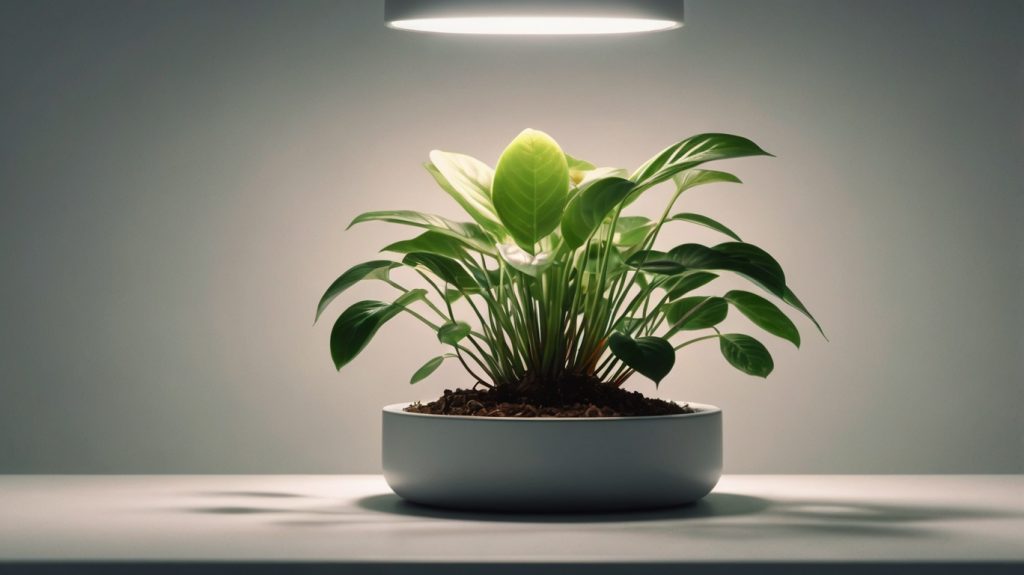
Here’s the truth: not every plant in your home is screaming for a grow light, but many of them are at least whispering, “Uh, hey… a little help here?” The plants that typically need grow lights are the ones that naturally grow in environments with bright, consistent sunshine—the kind you probably don’t have in your living room unless you live inside a greenhouse.
🌱 Herbs and Veggies: Basil, cilantro, mint, lettuce, and even tomatoes are sun worshippers. They might start strong on your kitchen counter, but without consistent light, they’ll stretch out like a teenager trying to reach the top shelf. Enter grow lights, their artificial sun.
🌱 Flowering Plants: Orchids, African violets, and begonias are stunning but needy. Without enough light, those colorful blooms? Gone. A grow light keeps them blooming like they’re on vacation in the tropics.
🌱 Tropical Beauties: Fiddle leaf figs, monstera, bird of paradise—these Instagram darlings weren’t meant to live in dark apartments with one north-facing window. They crave long, sunny days, and a grow light helps replicate that.
🌱 Seedlings: Growing plants from seeds? Then grow lights are your best friend. Seeds need a jumpstart, and without adequate light, you’ll end up with spindly, weak seedlings that keel over at the first sign of adulthood.
In short, if your plant has “bright, indirect light” listed on its care tag and your home looks more like “cozy, indirect gloom,” then yes—your plant is probably on Team Grow Light.
How to Tell if Your Plant is Begging for More Light
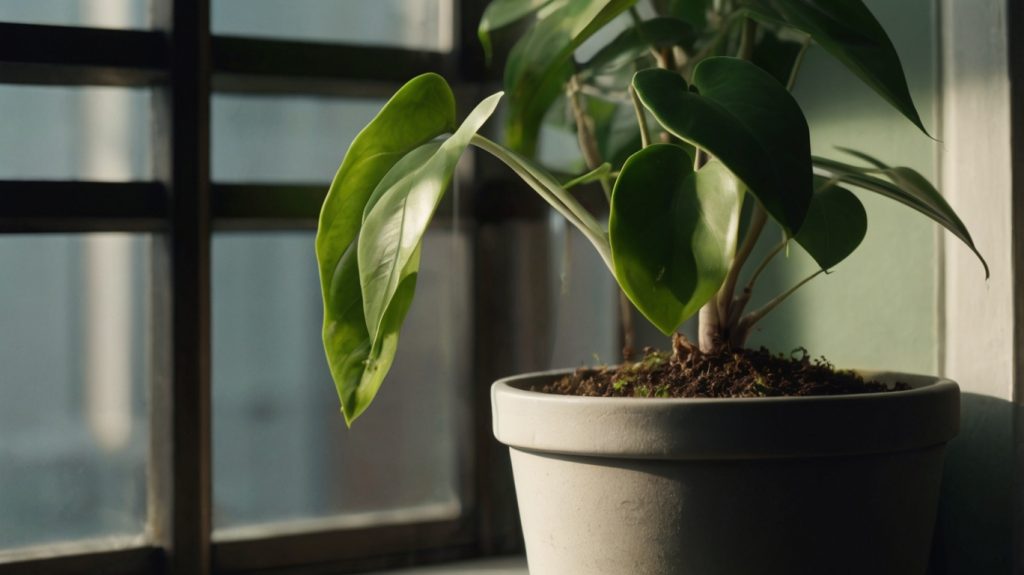
Plants are actually terrible at hiding their emotions. They’ll tell you when they’re unhappy—you just need to know how to read their dramatic little signals.
🔹 Leggy Growth: If your once-compact basil plant suddenly looks like it’s auditioning for a lanky runway show—long stems, tiny leaves, big gaps between nodes—that’s a neon sign saying, “I need more light!”
🔹 Yellowing or Dropping Leaves: Sure, sometimes this happens naturally, but if it’s happening across the board, your plant isn’t getting enough light to support all that leafy goodness.
🔹 Leaves Turning Toward the Window: Plants do yoga, too. If yours is leaning so far toward the window it looks like it might fall over, it’s basically begging for help. A grow light above the plant will even out the stretching and keep it from looking lopsided.
🔹 Slow or No Growth: If months pass and your plant hasn’t budged, don’t assume it’s just “chill.” It’s probably stuck in survival mode because it doesn’t have the energy to grow.
🔹 No Flowers on Flowering Plants: That orchid or African violet not blooming? It’s not you—it’s the lack of light. Without enough energy from light, flowering just won’t happen.
Think of light as plant food. If your leafy buddy is acting like a grumpy teenager—droopy, pale, sluggish—it’s probably starving for more. That’s your cue: grab a grow light and watch them perk up like they just had their morning coffee.
Find Your Best Grow Light
Okay, so you’ve realized your plant needs a grow light. Now comes the hard part: choosing one. And trust me, it’s like online dating—you’ll see a lot of options, but not all of them are “the one.”
🌟 LED Grow Lights: The Beyoncé of the grow light world. Energy-efficient, long-lasting, and customizable with different spectrums. They don’t run hot, which means you won’t accidentally roast your parsley into a crispy garnish. Plus, LEDs come in cute setups—from clip-on lamps for your desk to full-on panels if you’re basically running a jungle.
🌟 Fluorescent Lights: Think of these as the steady, dependable option—like that friend who always shows up on time. Great for seedlings, herbs, and leafy greens. They don’t guzzle electricity, and they spread light evenly. Not as sexy as LEDs, but hey, not every hero wears a cape.
🌟 HID (High-Intensity Discharge): These are the big guns, used by serious growers. They produce intense light, perfect for fruiting or flowering plants that demand a lot of energy. Downsides? They can heat up like a summer BBQ, and they’re not exactly wallet-friendly.
🌟 Compact Fluorescent Lamps (CFLs): Budget-friendly and easy to find. Perfect for beginners who just want to give their plant babies a little extra glow without investing in a NASA-style setup.
👉 Pro tip: Match the light to the plant. Herbs and leafy greens? Fluorescent or LED is fine. Fruiting plants (like tomatoes or peppers)? Go big with HID or strong LED.
At the end of the day, your “best grow light” is the one that fits your plants, your budget, and your living room aesthetic. Because let’s be honest—no one wants their living room looking like a UFO landing zone (unless that’s your thing).
How Can I Tell If My Plant Is Getting Too Much Direct Light?
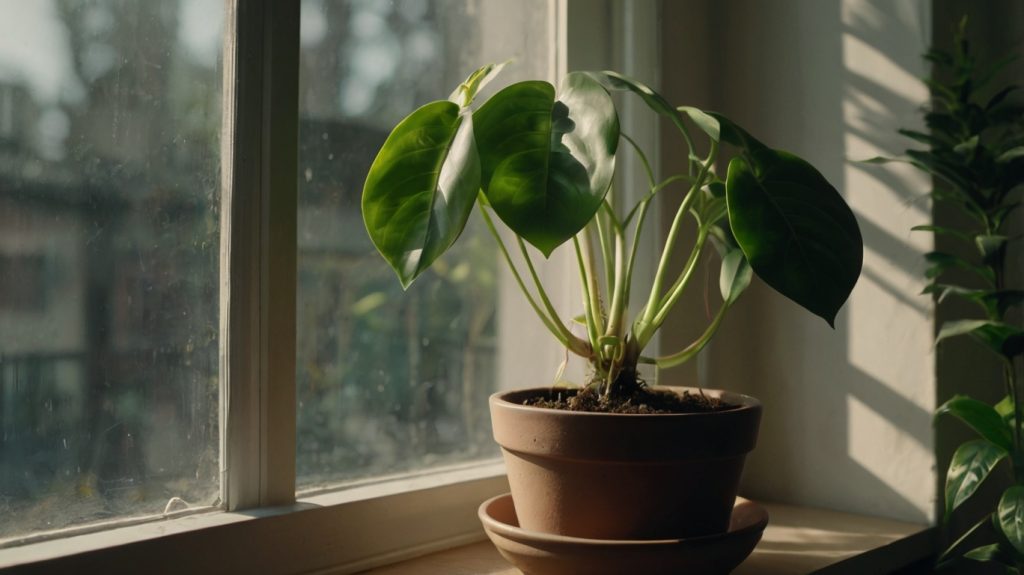
Now here’s a twist—sometimes you can love your plant too much and accidentally overdo it. Yes, too much light is a real thing. Plants may need sunshine, but they’re not tanning at the beach. They can—and will—get sunburned.
🔥 Leaf Burn (literally): If you notice crispy brown patches or scorched-looking spots on the leaves, your plant isn’t just “a little dry.” It’s been fried like a potato chip under too much light.
🔥 Faded or Bleached Leaves: Instead of that rich, healthy green, your plant starts looking washed-out, pale, or even yellowish. Imagine leaving a colorful shirt in the sun too long—it fades. Same with leaves.
🔥 Dry Soil… Always: If the soil is drying out faster than you can keep up, it might not just be the air—it could be too much light blasting down on it.
🔥 Droopy Drama: Ironically, plants can droop when they’re overexposed. It looks a lot like underwatering, which confuses most plant parents. But if you’re watering regularly and your plant still looks like it’s fainting, it may be saying, “Cool it with the light, please.”
👉 Fixing it: Pull the grow light a little higher, reduce the hours it’s on, or switch to a softer spectrum. Remember, plants don’t need light 24/7. Most of them thrive on about 12–16 hours of light followed by actual darkness—yes, plants sleep too.
So if your plant looks like it just got back from a desert road trip—crispy, pale, exhausted—it’s time to dial down the light and let it chill. Balance is key: not too little, not too much. Basically, treat your plants like Goldilocks—they like things “just right.”
How Long Should My Grow Light Be On?
Ah, the million-dollar plant parent question: “How long do I leave this thing on without accidentally turning my basil into a fried salad?” Don’t worry—you’re not alone. Figuring out the perfect light schedule is like babysitting a kid who can’t talk yet—you have to read the signs, use a bit of science, and hope they don’t throw a tantrum.
First, let’s get one thing straight: plants don’t just need light; they need the right amount of it. Too little and they sulk. Too much and you basically turn their leaves into plant bacon.
Here’s the sweet spot:
- Most herbs and leafy greens (like basil, mint, spinach, lettuce) thrive with about 12–16 hours of light per day. Yep, they’re basically light junkies.
- Flowering plants (orchids, African violets, etc.) often need 14–18 hours of light to bloom beautifully.
- Succulents and cacti usually prefer the lower end, around 10–12 hours, since they’re used to brighter natural environments and can “store” energy.
- Seedlings are high-maintenance babies—they need 16–18 hours of consistent light to grow strong and avoid the dreaded “leggy” look.
The easiest way to manage this? Put your grow lights on a timer. Seriously, this little gadget will save your sanity. No more 11 p.m. panic runs to the kitchen wondering if your rosemary is still “awake.”
Think of grow lights as your plant’s Netflix subscription. Too little, and they’re bored. Too much, and they’re burnt out. Hit the right balance, and you’ve got happy, thriving green roommates who don’t ask to borrow your Wi-Fi password.
Final Thoughts: Let There Be (Grow) Light
So, here we are. You started this journey probably staring at your droopy pothos or your sad little basil plant, wondering why your “green thumb” feels more like a “brown thumb.” And now, hopefully, you realize—it’s not you. It’s the light. Or rather, the lack of it.
Grow lights aren’t some bougie plant accessory reserved for Instagram gardeners with perfect shelves and fairy lights. They’re the unsung heroes of indoor gardening—the difference between plants just surviving and plants absolutely thriving.
We’ve walked through a lot here:
- Which plants actually need grow lights (spoiler: more than you think).
- How to tell if your plant is basically begging for more light (leggy stems, droopy leaves, that “send help” look).
- How long to keep your grow light on (hint: no 24/7 tanning booths for your ferns, please).
At the end of the day, here’s the truth: light is fuel. Without it, your plants are running on empty. And with it, they’re photosynthesizing machines, ready to gift you with lush leaves, fresh herbs, flowers, or even a full indoor salad bar.
The best part? Setting up grow lights doesn’t have to be complicated. Between timers, affordable LEDs, and clever placement, you can give your green roommates exactly what they need without turning your home into a NASA laboratory.
And remember—gardening is supposed to be fun, not stressful. If you mess up, it’s okay. Plants are surprisingly forgiving once you meet their basic needs. That droopy basil? It’ll perk back up. That leggy tomato? It might just surprise you. The goal isn’t perfection; it’s progress.
So the next time you catch yourself whispering “Why won’t you grow?” to your spider plant (we’ve all done it), take a step back and think: maybe it just needs a little artificial sunshine.
Because here’s the secret: with the right grow light, you’re not just keeping plants alive—you’re building your very own indoor oasis. A little patch of green happiness that asks for nothing more than some water, care, and, of course, light.
Now go on—plug in that grow light and give your plants the spa treatment they deserve. They’ll reward you with fresh air, a cozier home, and maybe even a smug sense of pride when guests gasp, “Wow, your plants look amazing!”
And hey, you can smile and say, “Yeah, I guess I’m kind of a plant whisperer.” (No one needs to know your secret weapon is a light bulb.) 🌱💡
Conclusion: Helping Your Plants Shine
At the end of the day, grow lights aren’t just gadgets—they’re lifelines. They bridge the gap between what your plants want (endless sunshine) and what your home can realistically offer (a window that may or may not face your neighbor’s wall).
We’ve covered a lot here—why grow lights matter, which plants crave them the most, how to recognize when your leafy friends are begging for more light, and how long to keep the glow going without turning your plants into toast.
And if there’s one takeaway, it’s this: light is food. The right grow light can mean the difference between limp, lifeless greenery and a thriving, jungle-like indoor haven.
The best part? You don’t need to overcomplicate it. A timer, the right bulb, and a bit of observation go a long way. Start small, experiment, and adjust—your plants will tell you if they’re happy. (Trust me, you’ll know. Perky leaves are basically the plant version of a thank-you hug.)
So, whether you’re coaxing herbs to grow in your kitchen, nurturing a moody fiddle leaf fig, or raising seedlings for your spring garden, remember this: with the right grow light, you’re not just gardening indoors—you’re creating an oasis.
Your plants deserve their spotlight. Go ahead—flip the switch, let them shine, and enjoy the green, glowing rewards. 🌱💡
FAQs
A grow light is an artificial lighting source designed to mimic some or all of the spectrum of sunlight. Plants use light for photosynthesis—turning light into food. If your home doesn’t provide enough natural light (through windows, skylights, etc.), a grow light helps provide the wavelengths plants need (especially red and blue light) to grow, bloom, or stay healthy even indoors
Plants that have high light demands or that are trying to flower or produce fruit often benefit most. Examples include: many edibles (tomatoes, peppers), herbs, tropical flowering plants, succulents, and plants that grow from seed indoors. Also large floor-plants (like fiddle-leaf figs), orchids, and African violets often suffer indoors without supplemental light
“Full spectrum” means the light includes multiple wavelengths across the spectrum (blue, red, sometimes green etc.), more closely resembling natural sunlight. While not absolutely essential for every plant, full spectrum lights are more versatile and better for general growth. They allow plants to undergo vegetative phases, flowering stages, and overall healthier development. If you use a light that only emits certain wavelengths (e.g. just blue or red), it may force trade-offs (good foliage vs weaker flowers or vice versa)
The ideal distance depends on the type of light and the plant. LEDs often can be placed 12-24 inches above plants, fluorescent lights closer (perhaps 6-12 inches), while high-intensity discharge (HID) lights may need to be higher to avoid burning plants. Always check the manufacturer’s recommendation and observe your plants. If you see leaf burn or bleaching, the light might be too close; if you get leggy growth (plants stretching), the light might be too far
Most plants thrive under artificial light for ~12 to 18 hours per day, depending on their life stage. Seedlings and plants in vegetative growth often need around 16-18 hours. Flowering plants can often do well with 12-14 hours of light. Importantly, plants also require a period of darkness (rest), so 24/7 lighting is typically not ideal
Yes—in many cases, grow lights can fully replace natural light, especially when natural light is very limited or absent (like in basements, apartments with small windows, or during winter). But good lights, especially full spectrum ones, are necessary so the plants still receive appropriate intensity and spectral quality. If you do have some natural light, using grow lights to supplement (rather than replace completely) often gives the best results
Plants generally need blue light (promotes leaf growth and vegetative strength) and red light (important for flowering and fruiting). Many grow light systems mix blue + red or provide a full spectrum that includes these plus other bands (green, far red, etc.) for more balanced growth. The exact ideal mix depends on the plant type and growth stage
Signs include: leggy or elongated stems (stretching toward light), small or pale leaves, slow growth, leaves turning away from the light source, lack of flowering (if applicable), or dropping lower leaves. These are tell-tale signs your plant is “begging” for more or better quality light
Generally yes. LEDs tend to be more energy-efficient, produce less unwanted heat, last longer over time, and allow more precise control over spectrum. Fluorescent lights are less expensive up front but less efficient; HID lights provide high intensity but can run hot and consume more electricity. LEDs are often best for home growers because of their efficiency and lower running costs
A few potential downsides, if you’re not careful:
If lights are too close or too intense, you can get leaf burn.
Running lights too many hours (without darkness) can stress plants.
Poor quality or cheap lights might deliver the wrong spectrum or low intensity—plants may be wasting energy.
Electricity cost: more hours + higher power lights = higher bills.
Also, some lights (especially older or non-LED) produce heat which can dry soil, burn leaves, or increase risk of pests or disease.
